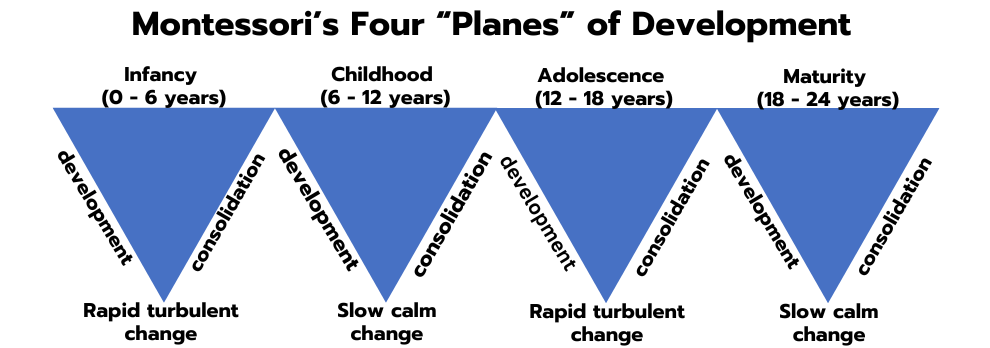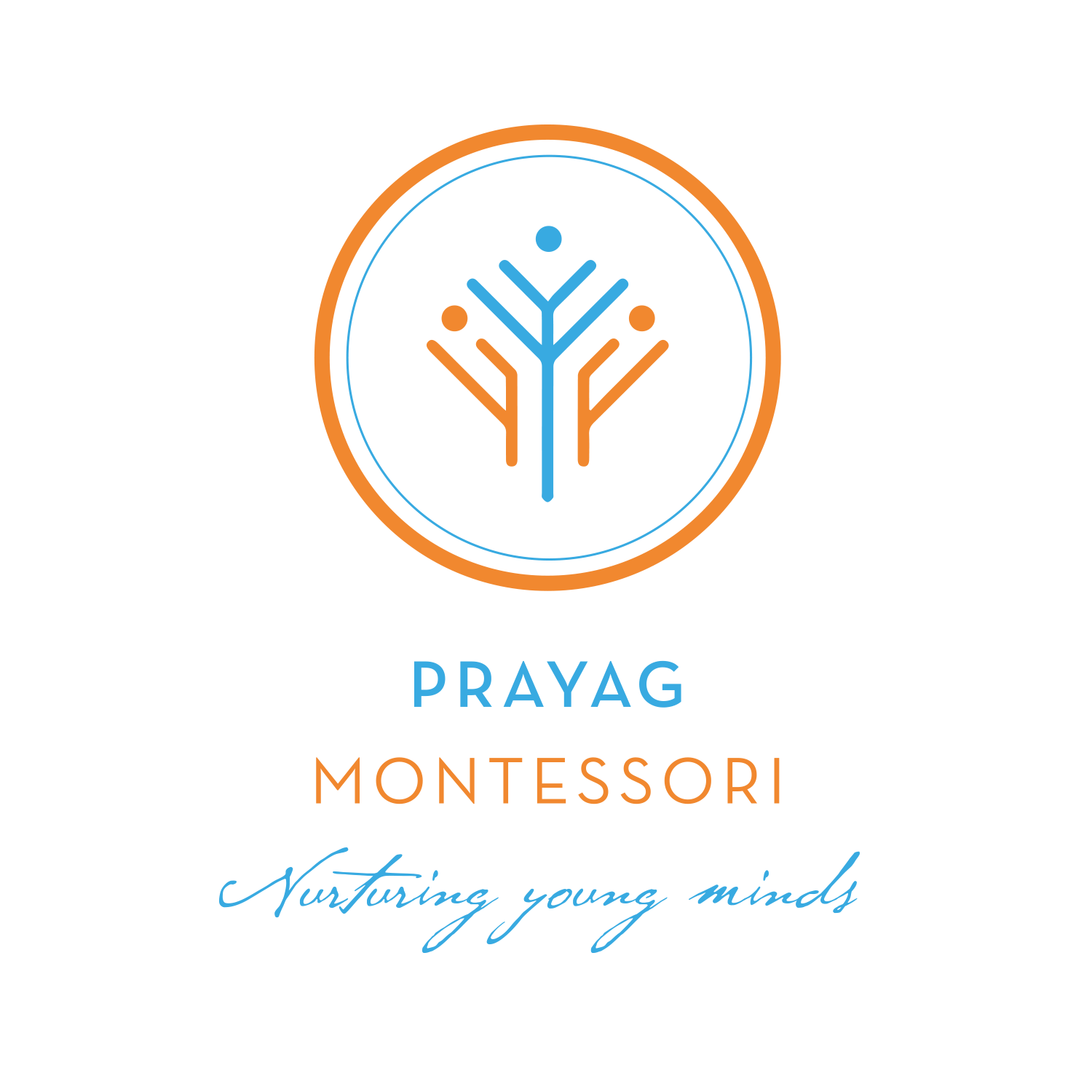
Dr. Montessori observed four distinct periods or “Planes” in human development,extending from birth to 6 years, from 6 to 12, from 12 to 18, and from 18 to 24. She saw different characteristics, learning modes,and developmental imperatives active in each of these planes and called for educational approaches specific to each period.Each Plane of Development is characterized by a “Sensitive Period”.
During this sensitive period, the child will learn particular skills more naturally than at any other time in his or her life.
Dr. Montessori asserted that each plane begins with an intense period of construction (progression),followed by a period of consolidation (retrogression) in preparation for a new stage of development. She observed numerous characteristics and milestones in each plane of development.
The first plane extends from birth to around six years of age. During this period,the child undergoes striking physical and psychological development, and is a learner engaged in the developmental work of psychological self-construction and building functional independence. The “absorbent mind” of the child, assimilates the sensorial stimuli of his or her environment, including information from the senses, language, culture, and the development of concepts.
The Second Plane of Development or the Childhood Plane, extends from around 6 years to 12 years. This development period is characterized by “conscious imagination” wherein children develop a craving for mental or intellectual independence. Children move out of their cosseted and safe environment and start exploring the wider world around them. During this plane, the child is in the sensitive period for peer identity and wants to be accepted as a member of a group. Children begin to display the ability to reason and use abstract thinking.
The Third Plane, extending from the age of 12–18 years, is the Adolescence Plane. This creative period is characterized by an effort to construct a social personality beyond childhood. These adolescents strive for social and economic independence and a sense of control of their life.They seek to create a “New Identity” for themselves.
The Fourth Plane extends from 18 years to 24 years and is a phase of Maturity. This transition to Adulthood, is characterized by spiritual, emotional, and moral independence. These mature individuals spend time thinking about their place in the society, contribution to society, and humanity. Additionally, this stage of development heavily demonstrates a strong desire for financial independence and decision-making.
The first plane extends from birth to around six years of age. During this period,the child undergoes striking physical and psychological development, and is a learner engaged in the developmental work of psychological self-construction and building functional independence. The “absorbent mind” of the child, assimilates the sensorial stimuli of his or her environment, including information from the senses, language, culture, and the development of concepts.
The Second Plane of Development or the Childhood Plane, extends from around 6 years to 12 years. This development period is characterized by “conscious imagination” wherein children develop a craving for mental or intellectual independence. Children move out of their cosseted and safe environment and start exploring the wider world around them. During this plane, the child is in the sensitive period for peer identity and wants to be accepted as a member of a group. Children begin to display the ability to reason and use abstract thinking.
The Third Plane, extending from the age of 12–18 years, is the Adolescence Plane. This creative period is characterized by an effort to construct a social personality beyond childhood. These adolescents strive for social and economic independence and a sense of control of their life.They seek to create a “New Identity” for themselves.
The Fourth Plane extends from 18 years to 24 years and is a phase of Maturity. This transition to Adulthood, is characterized by spiritual, emotional, and moral independence. These mature individuals spend time thinking about their place in the society, contribution to society, and humanity. Additionally, this stage of development heavily demonstrates a strong desire for financial independence and decision-making.

